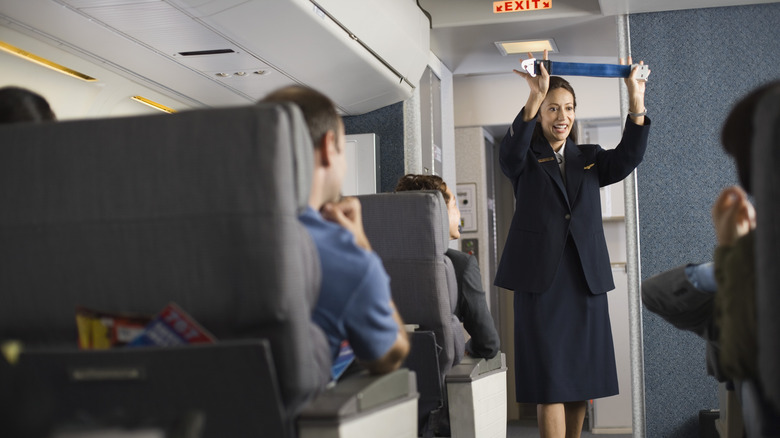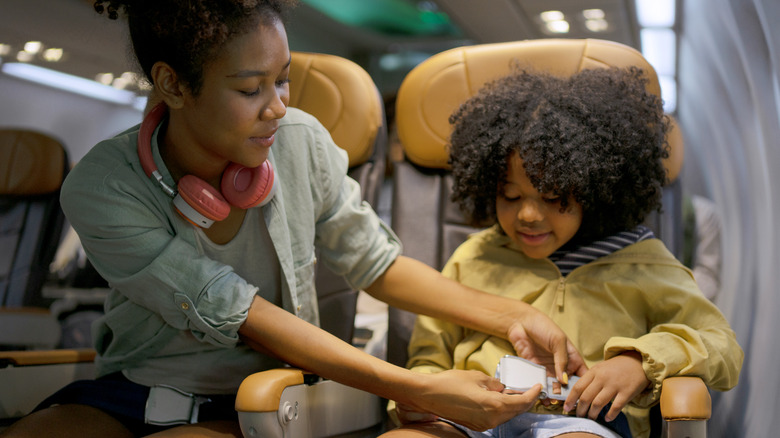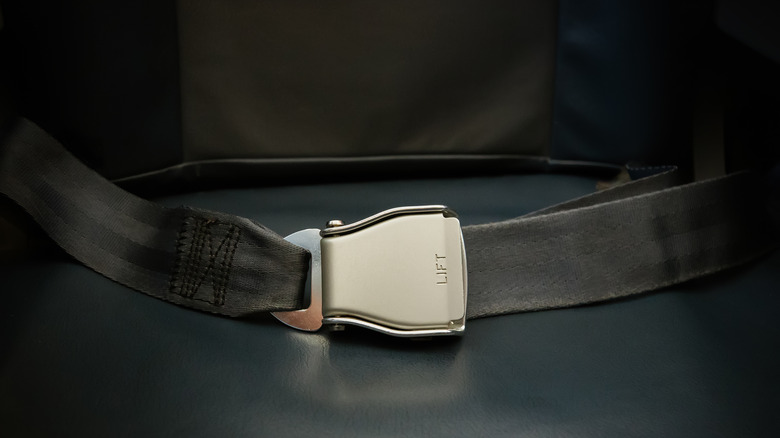Are You Wearing Airplane Seatbelts Correctly? A Flight Attendant Fills Us In
When the cabin crew performs the seatbelt demonstration at the start of the flight, most passengers don't even look up. Safety instructions in the front seat compartment are seldom read, and a 2007 survey shows that 7% of passengers never fasten their seatbelts when the sign is off. We often take airplane seatbelts for granted, assuming that buckling up is as straightforward as in a car. However, according to Court Acree, a seasoned flight attendant with six years of experience and a popular content creator, there's much more to the buckle. In a conversation with Explore, she shares crucial insights into the proper way to wear a seatbelt onboard, the risks of getting it wrong, and how to ensure you're buckled up correctly from take-off to 36,000 feet of altitude.
Acree emphasizes that the correct way to wear an airplane seatbelt is fundamentally about placement and fit. Passengers should wear the seatbelt tight across the hips, not the tummy. This position is crucial for maximizing the belt's effectiveness in keeping you safe. Unlike car seatbelts, which sit across the chest, according to FAA guidelines, airplane seatbelts are designed to secure you across the hips, where your body is strongest. The biggest risk on a plane is an up-and-down motion, while in a car, it's back-and-forth. Unlike car "push button" belts, planes have sported "lift lever" belts since the 1940s, with little change to the tried and true "vintage" mechanism, as they're quicker and easier to buckle and unbuckle.
Buckle up: the risks of incorrect airplane seatbelt usage
Court Acree explains that it's mandatory for everyone aged 2 and older to have their seatbelt fastened during taxi, takeoff, landing, and whenever the seatbelt sign is on. "These measures are in place for your protection," Acree notes, stressing the importance of compliance for safety. Anyone who's flown in economy class knows seats are notoriously small, with an average width of 16 to 18 inches and an average seatbelt length between 31 and 51 inches. For many, flying is uncomfortable — but that shouldn't detract anyone from wearing their seatbelt and wearing it right. The most popular reason why passengers don't buckle is the flawed conviction that seatbelts are not effective in the event of a crash and that they hinder evacuation, but these are unsubstantiated myths.
The consequences of not wearing your seatbelt correctly can be severe. Acree warns, "If your seatbelt isn't buckled or isn't low and tight across your hips, you risk organ damage during severe turbulence or a hard landing." Incorrectly worn seatbelts can also lead to passengers hitting the seat in front of them, jolting out of their seats, or colliding with parts of the aircraft or other passengers. Any "seatbelt hacks," like this viral TikTok that claims to be a solution for more comfortable airplane sleeping, should be avoided entirely. Although these viral hacks come with the promise of better sleep, they also come with the possibility of blood clots, turbulence risks, and a slew of other problems.
When and how to request a seatbelt extender
Understanding when and how to request a seatbelt extender is another vital aspect of seatbelt safety. "You can request a seatbelt extension as soon as you come onboard or discover you need one at your seat," explains Court Acree. Since there's no "best" time to ask for an extender, she advises doing so promptly upon realizing the need, especially since it's important to be buckled up once the boarding door closes.
However, she cautions against bringing personal extenders. "Each aircraft has a specific extension, and there are locations on the aircraft where seatbelt extensions aren't allowed, she points out, particularly highlighting exit rows where extenders can pose a tripping hazard during an evacuation. Moreover, the FAA advises that airlines should not permit any passengers to use personal seatbelt extenders, as the airline is legally obliged to provide FAA-approved safety-tested ones for free.
Acree believes that understanding the "why" behind aircraft regulations can enhance compliance and safety — and there's no better way to learn more than directly from the cabin crew. "If you have questions about why certain rules exist on the aircraft, flight attendants can explain," she offers. Ultimately, despite their formality, these protocols are essential practices designed to keep you and others safe. By following the guidance of flight attendants like Court Acree, passengers can contribute to a secure environment aboard, ensuring everyone arrives at their destination in comfort and safety. Buckle up and do it right!


